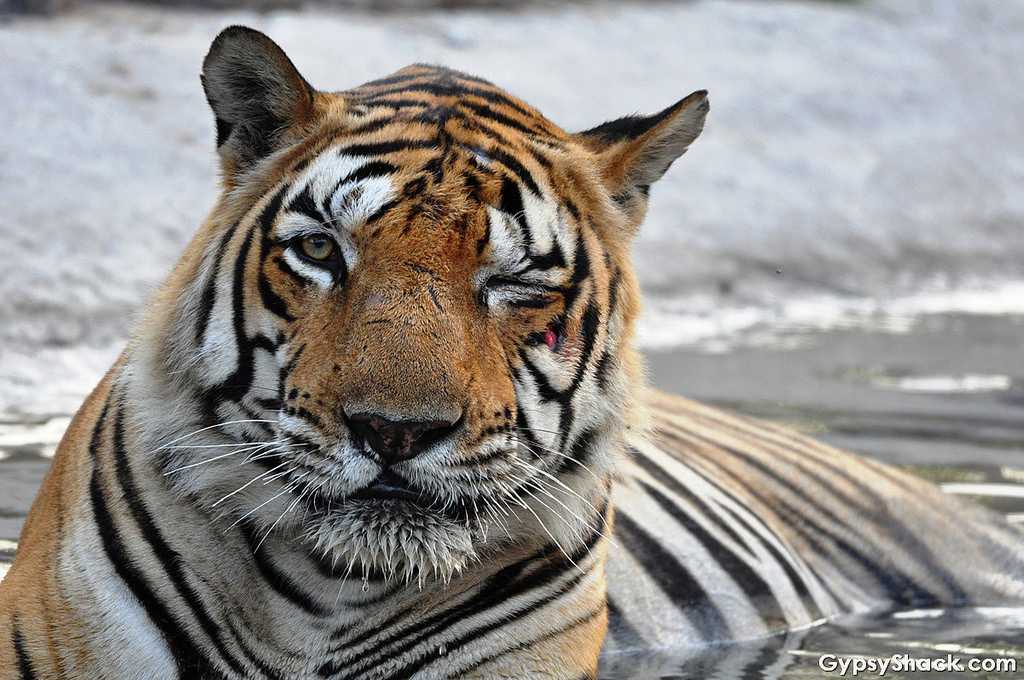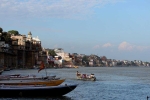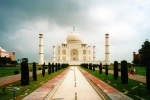Bandhavgarh National Park Tourism
Ideal Duration : 1-2 days
Best Time : October to June
"The Tiger's Den"
Bandhavgarh National Park Tourism
Formerly a hunting ground for the Maharajas of Rewa, this National Park is world-renowned as a tiger reserve.
The Bandhavgarh National Park inMadhya Pradeshis a beautiful forest with wildlife and vegetation in abundance. Bandhavgarh is known to have the highest density of Royal Bengal Tigers in the world and the frequent sightings of royal tigers make this national park a must-visit for all wildlife enthusiasts. In 2012, around 44-49 tigers were living in the park. There are more than 22 species of mammals and 250 species of avifauna.
Among the carnivores, Tigers, Asiatic jackals, foxes, sloth bears, ratels, gray mongoose, striped hyenas, jungle cats, and leopards are found here. Deer, monkeys, Wild boars, Nilgai, Chinkara, and Gaur, are also found here. A jeep safari into the park can take for a ride through adventure and enjoyment. The park got its name from the Bandhavgarh fort situated at the height of 800 m high cliffs nearby. The fort is in ruins now, but an hour trek to the fort is worth it as it provides a generous view of surroundings.
Download Bandhavgarh National Park PDF Guide >
What's Great?
Picturesque landscape. Has the highest number of tiger density in the world. Fittest topography. Easy access, as it is centrally located.
What's not so Great?
Spotting of the tiger is not 100% sure. In monsoons, the national park remains closed for three months.
For Whom
Bandhavgarh National Park is ideal for family trips. It is also perfect for the ones who are looking for adventure and want to experience the wilderness.
History and Etymology
Bandhavgarh National Park used to be a former hunting preserve of the Maharaja of Rewa which is presently famous for its heritage and white tigers. This place is legendary and owns an abundance of historically abundant landmarks within the park. The city of Bandhavgarh has been demolished and flourished through several ages since the age of Ramayana, and thus reasons or its copper tinted air and stone wind fragrances. The National Park was given the name of Bandhavgarh because of an ancient fort in a hillock in Umaria along the Vindhya ranges. The name Bandhavgarh is derived from the word 'bandhav' which means brother and ?garh? meaning fort. The legend has it that Lord Rama was passing the forests of Bandhavgarh after defeating Ravana and decided to build a fort. It was to symbolise his love for his brother Lakshman.
The Three Gates
Bandhavgarh boasts the highest number of tigers regarding density. Compared to other national parks, the probability of spotting a tiger is way too high here. The park has three gates, which are - Tala, Magadhi and Khitauli.Out of these three, Tala gate is the most select and expensive gate. The ones who are keen on watching birds can opt for the Magadhi entrance. Being an absolute adventurer's delight, this park never disheartens its visitors because it offers a wide variety of flora and fauna.
Safaris
October to May is the ideal time for visiting the national park. Unlike any other national park, there are three types of safaris offered by the authorities - jeep, canter and elephant. Jeep and canter safaris are more popular among the tourists because it is easily available and cheaper than the elephant safari.
Elephants are typically used in Bandhavgarh to take you to the spot where tigers get tracked. Available only in the morning shift, these elephant safaris are on first come first serve basis and charge around INR 500 per head to take one to a spot where one can see a tiger in its most natural form. Four passengers are typically allowed on an elephant, and there is a mahout and a naturalist on this trip too.
Jeep Safarisoperate in two shifts, one in the early morning at the time of sunrise (Around 5.30 AM) for 4 hours and then starts again at 2-3 PM and goes till the sunset. Since Bandhavgarh is very popular, its advisable to book a jeep in advance, as only a limited number of jeeps are allowed in each shift. Each jeep can take up to 6 travellers other than a driver and one naturalist. Visitors typically prefer Tala region to spot tigers. Afternoon shift is typically closed on Wednesdays.
Canter Safari: Canters with a seating capacity of 12 people can be booked on the spot. However, prior online booking is recommended. They charge INR 1200 for Indians and INR 2400 for foreigners.
Note:The cost may vary from zone to zone.
Tips:Carry your sunglasses, hats and water bottles. Also, carry one ID Proof for the reservation. Children under 5 years of age are allowed along with the adults free of cost.
Flora and Fauna
The list of fauna in Bandhavgarh is - White Tiger, Royal Bengal tiger, Rhesus monkeys, spotted deer, barking deer, sloth bears, leopards, jackals, mongoose, wild pigs, jungle cats, etc. The flora is typically dry and deciduous type with mostly sal and bamboo trees being dominant in the forest. A lot of resorts are there in Bandhavgarh, making the stay memorable and comfortable. It also hosts a primate species of birds including Dove, Parakeet, Serpent Eagle, Black Vulture and common Peafowl. Several species of reptiles such as python, turtle, viper, and ratsnake are commonly found in the area.
Bandhavgarh Fort
On the east end of Bandhavgarh national park lies the Bandhavgarh Fort. It is the height point of this national park.
Among the oldest forts of India, Bandhavgarh was built more than 2000 years ago though the history around it is not very clear yet. A one hour trek is required to reach here from Tala zone and visitors must take a guide to visit this place.
There are numerous caves in this fort area and some of them have inscribed paintings and scripts written in Brahmi. There are also a few temples here. The whole area is deserted, but it is still visited frequently by locals. According to Ramayana, it is believed that Rama's army built this fort and handed it to Lakshmana and hence Lakshmana is the main god of this temple. The trek is totally worth it to this 800 m high fort as it gives a breathtaking view of the surroundings. There is also a giant 35 feet sleeping statue of Vishnu here. This statue is believed to be dating around 10th century A.D. and Vishnu is shown reclining on the bed made by coils of the Seven Hooded Serpent, called Shesh Naag. The statue is locally known as Shesh Shaiya.
Itinerary
Day 1:Reach Umaria station (closest to Bandhavgarh) early morning. A 30-minute drive will take you to the land of tigers. Upon arrival, check into the resort. Relax in the morning. After lunch, take an evening safari to explore the wildlife and stay overnight at the resort.
Day 2:Gear up for morning and afternoon safari into the wildnerness. See the bandhavgarh fort, 3 cave point, shesh shaiya etc. Overnight stay at Bandhavgarh.
Day 3:Take an elephant safari in the morning and enjoy the forest in its absolute and pure form. After lunch, you can visit the nearby tribal village for leisure.
Restaurants and Local Food in Bandhavgarh National Park
With not too many options available, you can find typical Indian cuisine in this area along with popular items of Continental and Chinese cuisine. The local delicacies of Madhya Pradesh that you might find here includeDal Bafla, Biryani, Kebabs, Korma, Poha, Rogan Josh, Jalebi, Ladoosas well as beverages likeLassi and Sugarcane Juice.
View 2 Restaurants in Bandhavgarh National Park >>
Oct-Junis the best time to visit Bandhavgarh National Park
The park opens its gate for the visitors from October-mid to June end. The peak season is from November to February as the climatic conditions are excellent.
Weather in Bandhavgarh National Park
Loading...
Bandhavgarh National Park in Summer (February-June)
Heat waves start to strike in April as summer begins to set in. Since the vegetation all dries up, the sighting of animals becomes very easy. It is during this season that Tigers are frequently seen around water bodies, either resting or having water.
Bandhavgarh National Park in Monsoon (July-October)
Monsoon is not an ideal time to go to the national park as it closes its gates for three months during these months.
Bandhavgarh National Park in Winter (November-February)
The footfall is highest during these months because of the fantastic view of the flora as well as excellent weather. It is an ideal time for the bird watchers as migration takes place during this period. It is during the winter months that the animals mate. If one is lucky, they can see the tigers mating in the wilderness.
Monthly Weather in Bandhavgarh National Park
Month
Avg. Minimum (°C)
Avg. Maximum (°C)
January
11
24
February
14
28
March
18
34
April
25
40
May
28
41
June
28
39
July
25
30
August
24
29
September
25
31
October
20
32
November
14
29
December
11
25
Comments on Bandhavgarh National Park
Post Your Comment


 Bhedaghat
Bhedaghat Varanasi
Varanasi Jabalpur
Jabalpur Agra
Agra Amarkantak
Amarkantak Panna
Panna